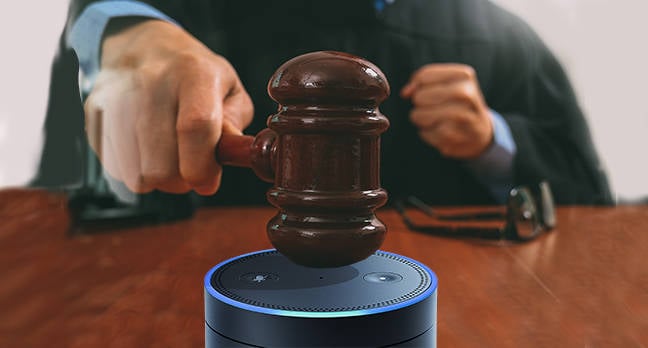BOOK THIS SPACE FOR AD
ARTICLE ADMexico’s new copyright law was rushed through Congress without adequate debate or consultation, and that’s a problem, because the law — a wholesale copy of the US copyright system — creates unique risks to the human rights of the Mexican people, and the commercial fortunes of Mexican businesses and workers.
The Mexican law contains three troubling provisions:
I. Copyright filters: these automated censorship systems remove content from the Internet without human review and are a form of “prior restraint” (“prior censorship” in the Mexican legal parlance), which is illegal under Article 13 of the American Convention on Human Rights, which Mexico’s Supreme Court has affirmed is part of Mexican free speech law (Mexico has an outstanding set of constitutional protections for free expression).
II. Technical Protection Measures: “TPMs” (including “digital rights management” or “DRM”) are the digital locks that manufacturers use to constrain how owners of their products may use them, and to create legal barriers to competing products and embarrassing disclosures of security defects in their products. As with the US copyright system, Mexico’s system does not create reliable exemptions for lawful conduct.
III. Notice and Takedown: A system allowing anyone purporting to be a copyright holder to have material swiftly removed from the Internet, without any judicial oversight or even presentation of evidence. The new Mexican law can easily be abused by criminals and corrupt officials who can use copyright to force online service providers to turn over the sensitive personal details of their critics, simply by pretending to be the victims of copyright infringement.
This system has grave implications for Mexicans’ human rights, beyond free expression and cybersecurity.
Implicated in this new system are Mexicans’ rights to education, repair, and adaptation for persons with disability.
The new law does contain language that seems to protect these activities, but that language is deceptive, as the law demands that Mexicans satisfy unattainable conditions and subject themselves to vague promises, with dire consequences for getting it wrong. There are four ways in which these exemptions are unfit for purpose:
Sole Purpose. The exemptions specify that one must act for the “sole purpose” of the exempted activity — a security researcher must be investigating a device for the sole purpose of fixing its defects, but arguably not to advance the state of security research in general, or to protect the privacy and autonomy of users of a computer, system, or network in ways that conflict with what the manufacturer would view as the security of the device. Noncommercial. The exemptions also frequently cover only “noncommercial” actors, implying that you can only modify a system if you can do so yourself, or if you can find someone else to do it for free. If you are blind and want to convert an ebook so that you can read it with your screenreader, you have to write the code yourself or find a volunteer who’ll do it for you — you can’t pay someone else to do the work. Good faith. The exemptions frequently require that anyone who uses them must be acting in “good faith,” an imprecise term that can be a matter of opinion when corporate interests conflict with those of researchers. If a judge doesn’t belief you were acting in good faith, you could face both fines and criminal sanctions. No tools. Even if you are confident that you are acting for the sole purpose of exercising an exemption and doing so non commercially and in good faith, you are still stuck. Because while the statute recognizes in general terms that there could be a process to create further exemptions for people who bypass digital locks, it does not provide a similar process for those who make tools for those purposes.The defects in the Mexican law are largely present in the US law from which they were copied. It’s telling that no US defendant has ever successfully used any of the statutory exemptions, not in 22 years. Indeed, the US Copyright Office has repeatedly affirmed that these exemptions do not adequately protect legitimate conduct with the clarity that would be required for them to be effective.
The US experience reveals the ways that badly drafted copyright law can interfere with education:
Educational materials are removed from the Internet due to incorrect or fraudulent copyright claims, without warning, leaving teachers who relied on those materials with holes in their curriculum; Educational materials are automatically removed from the Internet due to copyright filter errors, also stranding teachers with missing curricular materials; and Educators cannot make lawful use of the materials purchased for their students because they are blocked by TPMs that they are legally prohibited from bypassing.Increasingly, dominant firms have used control over repairs as sources of undeserved, monopoly profits. By controlling repair, firms can not only force customers to pay higher prices for repairs and to use more expensive, more profitable original parts — they can also force customers to discard their devices and buy new ones, by declaring them to be beyond repair.
Enacting legal penalties for bypassing TPMs is a gift to any company seeking to control repairs. Companies use TPMs so that even after the correct part is installed, the device refuses to work unless a company technician inputs an unlock code.
Disturbingly, this conduct has spread to the world of medical devices, where multinational corporations use TPMs to prevent repairs to ventilators.
At the forefront of the Right to Repair movement are farmers, whose must contend with both a remote location (far from the authorized technicians) and urgent timescales (you need to get your crop in before the storm hits, even if the authorized technician can’t make it out before then).
During the global pandemic, many of us are living under conditions familiar to farmers, dangling at the end of a long, slow, unreliable supply chain and confronted by urgent needs.
Technology is primarily designed in the global north by engineers and product specialists whose lives are very different from people in the global south. Mexican people have long relied on their own ingenuity and technical mastery to modify, repair and adapt systems built by distant people in foreign lands to suit their own lived experience in their own land.
Mexican law does not provide any clear protection for repairs that require access to or use of copyrighted works.
Repair is a vital part of self-determination, and the Mexican copyright law puts the interests of monopolistic, rent-seeking foreign companies ahead of the rights of Mexican people to decide how they will use their own property.
Nowhere is the need for technological self-determination more keenly felt than when it involves people with disabilities.
A rallying cry of the disability movement is “nothing about us without us” — meaning, among other things, that each person with a disability should have the final say about how their technology works.
The creation of assistive adaptations by and with people with disabilities has been a boon for everyone: the principle of “universal design” — design that enables every body and every mind to participate fully in life — means that all of us benefit, whether that’s using closed captions to watch a video in a noisy environment or to learn a foreign language; or using screen magnifiers to read small or low-contrast text.
Digital technology holds the promise of incredible advances in universal design: automated caption-generation and scene description, adaptive systems that anticipate a user’s intention based on statistical analysis of their historic usage, predictive text input, and more. Some of these adaptations will come from original manufacturers, but many will come from the community of those using the technology.
People with disabilities should face no conditions as to how they adapt their technology or who they chose to work with to make adaptations on their behalf. None. Period.
People with disabilities do not each necessarily have the technical knowledge to modify their own devices, by themselves, to suit their needs. This is why the exemption for people with disabilities in the Mexican law is wholly inadequate. It precludes hiring someone else to effect a modification (that would be “commercial activity”) and it forecloses on general-purpose research that helps with adaptation because no one is allowed to provide technology or services to aid in bypassing TPMs to adapt technology.
Under the Mexican law, the way that, say, a blind person is permitted to make a work accessible is to:
become a cybersecurity expert; discover a defect in the e-reader software; write a piece of software to liberate the ebook they want to read;No one is allowed to offer them technical assistance, and they may not share their accomplishment to help others. It would be a joke, if it wasn’t so grimly unfunny.
There can be no question that all of this is by intent or extreme negligence. Not only did Mexico’s Congress have the benefit of 22 years’ worth of documented problems with the US version of this law, they also had an easy remedy to these problems. All they had to do was say, “You are allowed to bypass a TPM provided that you are not violating someone’s copyright.” That’s it. Rather than larding their exemptions with unattainable and vague conditions, Mexico’s lawmakers could have articulated a crisp, bright-line rule that anyone could follow: don’t bypass TPMs in a way that’s connected to copyright infringement, and you’re fine.
They didn’t.
If you are based in Mexico, we urge you to participate in R3D’s campaign “Ni Censura ni Candados” and send a letter to Mexico’s National Commission for Human Rights to asking them to invalidate this new flawed copyright law. R3D will ask for your name, email address, and your comment, which will be subject to R3D’s privacy policy.
.png)












 Bengali (Bangladesh) ·
Bengali (Bangladesh) ·  English (United States) ·
English (United States) ·